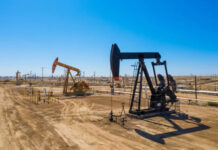We have lifted our growth forecast for 2023 from 1% to 1.2% and for 2024 from 1.4% to 1.6%.We see no marked change to the key themes behind our forecasts.
The Australian economy expanded by 0.4% in the June quarter with annual growth slipping from 2.4% to 2.1%.
That was in line with our expectations particularly in light of the partial data we had seen leading up to the announcement.
However, the March quarter result was upgraded from 0.2% to 0.4%.
After reviewing our forecast for GDP growth in 2023 in light of the June quarter data we have lifted our forecast for 2023 from 1% to 1.2% reflecting the March upgrade.
Apart from that we see no reason for any further changes to the GDP forecasts for 2023. Household consumption growth is set to print at 0.3% for both the September and December quarters. This ongoing insipid consumption growth reflects contracting real disposable income as the rising cost of living; an increasing tax burden and higher mortgage rates weigh on households.
Over the course of the next year to June 2024 we expect consumer spending will grow by only 0.8% even as interest rates are expected to remain on hold. Average mortgage rates are set to rise further as cheap fixed rate loans mature and are refinanced at much higher variable rates. While this profile reaches its highest intensity in the second half of 2023 there will still be more modest increases in average rates in the first half of 2024.
The RBA’s recognition of that insipid growth in the year to June 2024 is one factor supporting our call that the first rate cut will come at the August meeting.
In recognition of the resilience of the labour market we recently revised up our profile for employment growth in the second half of 2023, boosting household income growth and consumption. We saw no reason for any further upward revision and also maintain our expectation that the labour market will weaken in the first half of 2024 (-0.2% employment growth compared to 0.6% growth in the labour force and a rise in the unemployment rate from 3.7% to 4.5%).
That expected deterioration in the labour market will also resolve some of the mismatch between hours worked and output as firms cut back employment in the face of weak productivity and profitability.
That weakening in the labour market will slow the growth in labour income weighing on consumer spending while the pressures from higher rates and rising tax burden will continue.
We have lifted our forecast for growth in 2024 from 1.4% to 1.6% due to a modest uplift in growth in the second half.
We confirm our expectation that consumer spending will slow to 0.1% per quarter in the first half of 2024 but pick up from 0.7% growth to 0.9% in the second half.
As we have seen in the US a potential risk to this view is if the labour market held up in 2024 lifting incomes and consumption.
The labour market is expected to stabilise in the second half of 2024 around an unemployment rate of 4.5%. We have revised up our forecast for household spending in the second half of 2024 from 0.7% to 0.9%, reflecting an upgraded view on the positive impact on consumption of the introduction of the Stage3 tax cuts; the beginning of the RBA’s rate cut cycle; and some potential for further fiscal stimulus.
For businesses, the June quarter national accounts revealed a significant deterioration in profitability. This was in the broader context of a downturn in national income. Recall that as global commodity prices climbed to record highs in mid-2022, Australia’s annual nominal GDP growth accelerated to 12% in the June quarter 2022 and was still elevated at 9.5% in the March quarter 2023. However, with commodity prices receding from their highs, the terms of trade fell by 7.9% in the June quarter 2023 and nominal GDP contracted by -1.2% in the period, such that annual growth slowed to 3.6%. Company profits took a hit, contracting by 8.6% in the June quarter, to be 6.8% below the level of a year ago. Falling company profits went beyond the mining sector, with non-mining profits reportedly down by around 5% in the latest quarter.
Businesses are expected to respond to the ongoing soft demand conditions with a substantial slowing in plant and equipment investment in the second half of 2023 and 2024. Over the year to the June quarter 2024, plant and equipment investment is expected to contract by 13% following a lift of 6.3% in the year to June 2023. Overall, business investment is forecast to contract by 2.7%, with the drag from equipment being partly offset by solid conditions in infrastructure (+5.4%) and commercial building work (+3.3%).












